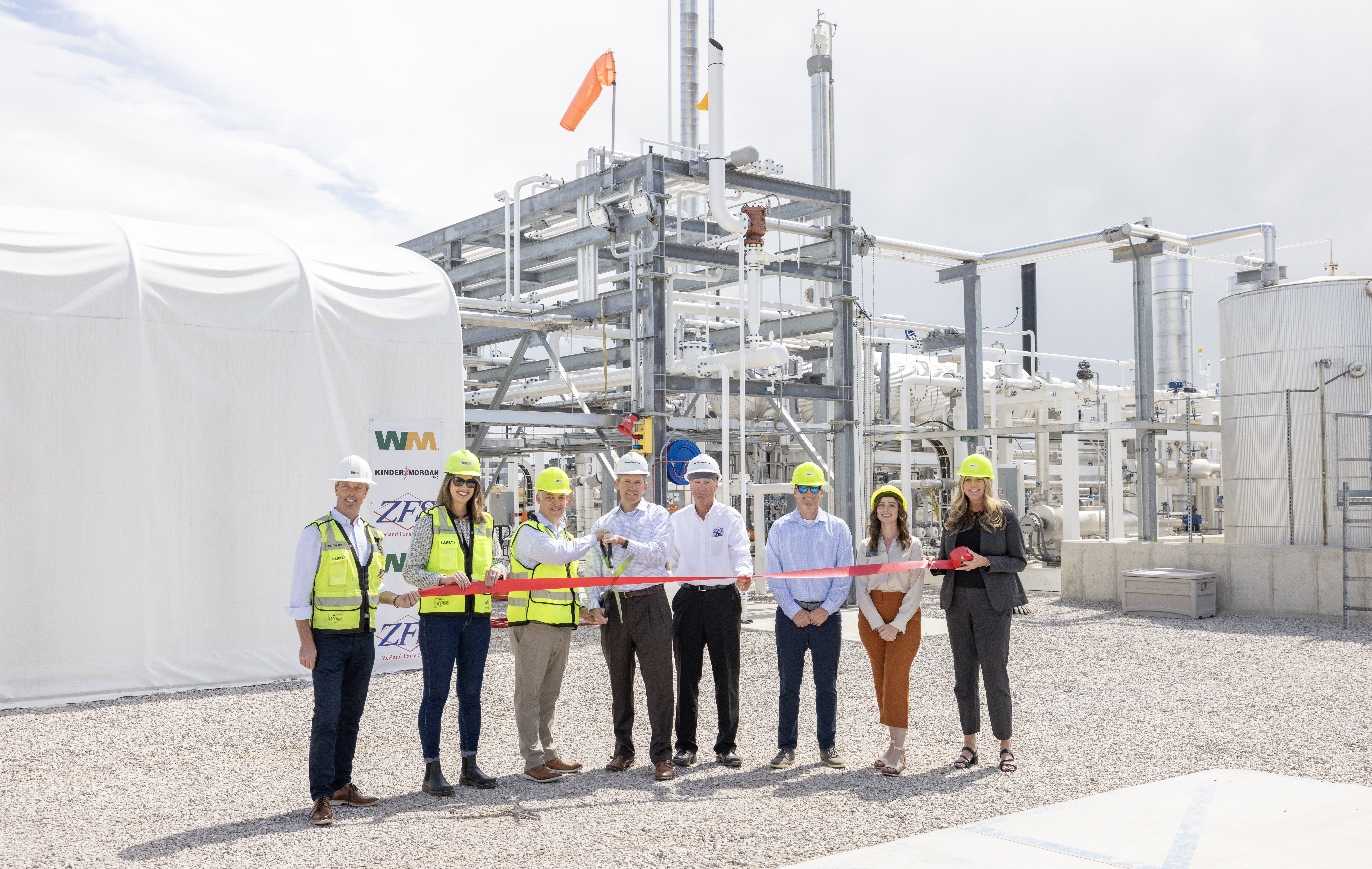
A ribbon cutting took place on August 26, 2025, with remarks from company leaders and community partners.
Autumn Hills RNG is Kinder Morgan RNG’s first RNG plant in Michigan. Originally landfill gas-to-electric and medium-Btu assets acquired by Kinder Morgan RNG in 2022, Autumn Hills RNG has been converted to produce pipeline-quality RNG and provide a lower-carbon solution to the transportation industry. When used as a transportation fuel, the RNG generated from the plant could displace more than 4.1 million gallons of diesel a year, lowering greenhouse gas emissions by approximately 46,659 tons.1
“Bringing Autumn Hills RNG online not only expands our RNG portfolio, it also enables us to support more fleets in their efforts to contribute to a more sustainable future by using RNG to power their vehicles,” said Craig Moore, Chief Commercial Officer of Kinder Morgan RNG.
RNG is a turnkey renewable energy solution that can be generated by capturing and upgrading methane from biogas produced through anaerobic digestion at landfills and other sources. Methane is a greenhouse gas (GHG) that is more than 28 times as potent as carbon dioxide at trapping heat in the atmosphere.2 Landfills that use their biogas to create RNG can increase their yearly revenue while decreasing methane emissions and reducing odors.
As we continue to expand the supply of RNG, our vertically-integrated approach enables us to efficiently collaborate with fleets. When fleets use RNG instead of diesel, they can reduce their emissions by up to 95%,3 all while complying with new regulations aimed at emissions reduction.
Utilities and companies across several industries can reduce emissions through using RNG. RNG has a diverse potential for use, including powering manufacturing processes, heating homes and buildings, and acting as a feedstock for electricity, sustainable aviation fuel, renewable methanol and hydrogen energy. RNG can use existing infrastructure and can be less capital intensive than other renewable solutions, making it an efficient and cost-effective option for reducing organizations’ carbon footprints.
Learn more about our Autumn Hills RNG plant, or contact us to learn how your landfill can start its sustainability journey through RNG.
If your organization would like to learn how using RNG can reduce its environmental impact, send us a note.
- Greenhouse Gas Equivalencies Calculator | US EPA
- Importance of Methane | US EPA
- https://www.anl.gov/sites/www/files/2021-03/RNG_FAQ_March_2021_FINAL_0.pdf

